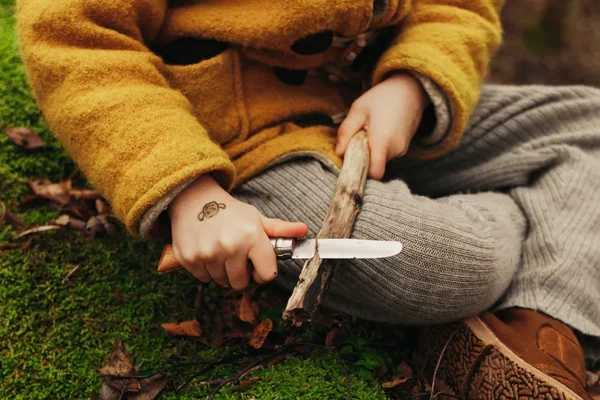Knives, one of humanity’s earliest tools, have played a pivotal role in our evolution. From prehistoric times to the present day, the history of the knife is intertwined with the history of mankind, marking significant advancements in technology, culture, and society.
Prehistoric Beginnings
The journey of the knife begins in the Stone Age, over two and a half million years ago. Early hominids crafted rudimentary knives from flint, shaping them through a process called knapping. These primitive tools were essential for survival, used for hunting, skinning, and cutting. The oldest known knives were simple and unrefined, yet they represented a significant leap in human ingenuity.
Bronze and Iron Ages: Material Innovations
The Bronze Age (approximately 3300–1200 BC) marked a significant turning point. The discovery of metalworking allowed for the creation of bronze knives, which were stronger and more durable than their stone predecessors. These knives were not only tools but also began to take on ceremonial and symbolic roles in various cultures.
The Iron Age (around 1200–600 BC) brought another material revolution. Iron knives were harder and could be sharpened to a finer edge than bronze knives. This period saw the knife evolve into a more versatile tool, with different shapes and sizes designed for specific tasks.
Classical and Medieval Periods: Refinement and Diversification
In ancient civilizations like Greece and Rome, knives were integral to daily life. They were used in cooking, crafts, and as eating utensils. The Romans, in particular, were known for their varied knife designs, ranging from large butcher knives to small, delicate fruit knives.
The medieval period witnessed further diversification. The burgeoning trade routes introduced new types of knives from different cultures. In Europe, the widespread use of the table knife is credited to Cardinal Richelieu of France in the 17th century, who had the points of his knives rounded to discourage guests from picking their teeth with them.
Renaissance to Industrial Revolution: Craftsmanship and Mass Production
The Renaissance era was a golden age for knife-making, with craftsmanship reaching new heights. Cities like Sheffield in England and Solingen in Germany became renowned for their high-quality knives. During this period, pocket knives became popular, embodying intricate designs and often made with precious materials for the elite.
The Industrial Revolution in the 18th and 19th centuries marked a dramatic shift from handcrafted knives to mass-produced ones. This era introduced mechanization in knife production, making knives more affordable and accessible to a broader segment of the population. Companies like CRKT began to emerge, combining traditional craftsmanship with modern technology.
20th Century: Innovation and Specialization
The 20th century brought significant technological advancements. Stainless steel, invented in the early 1900s, became a preferred material for knife blades due to its corrosion resistance and ease of maintenance. World War II accelerated the development of various types of knives, particularly combat and survival knives, which had a profound influence on later designs.
Post-war, the focus shifted to specialization. Chefs’ knives, sports knives, and utility knives were designed with specific functions in mind. The late 20th century also saw the rise of multi-tools, epitomized by brands like Victorinox and Leatherman, reflecting a trend towards functionality and versatility.
21st Century: Modern Trends and Innovations
Today, knives continue to evolve with cutting-edge technology and materials. Ceramic blades, known for their sharpness and durability, have become popular in kitchen knives. The trend towards custom-made knives has also gained momentum, with artisans blending traditional craftsmanship with modern aesthetics and materials.
The evolution of knives is not just a tale of technological advancement but also a reflection of changing human needs and societies. From flint tools in the hands of prehistoric hunters to the sleek, multi-functional blades of today, knives have been indispensable companions in humanity’s journey. As we forge ahead, knives will undoubtedly continue to evolve, adapting to future challenges and innovations.






